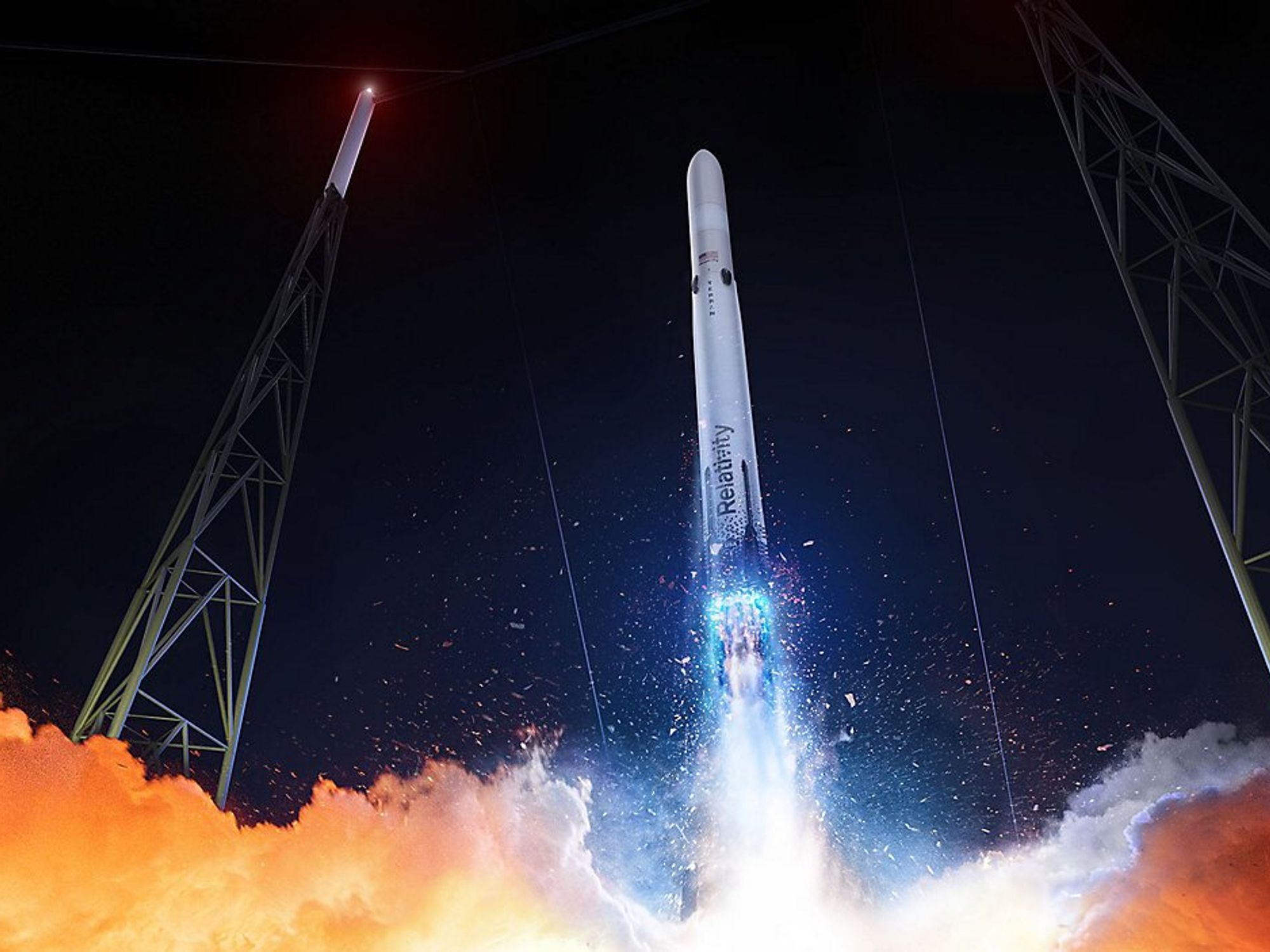Why Rockets Keep Getting Bigger
Samson Amore is a reporter for dot.LA. He holds a degree in journalism from Emerson College. Send tips or pitches to samsonamore@dot.la and find him on Twitter @Samsonamore.

SpaceX will attempt another launch of its massive Super Heavy rocket booster and Starship spacecraft April 20, and if it’s successful, the flight will mark the ascent of the largest object SpaceX has ever flown.
Starship was originally scheduled to lift off April 17, but an issue with a pressure valve caused the launch to be delayed. With such a large craft it’s not uncommon for companies like SpaceX to be extra cautious in favor of making sure every miniscule part is in order – especially since SpaceX founder Elon Musk once warned that Starship could have only a 50% chance of reaching orbit on its first launch.
But on a larger scale, SpaceX’s focus shifting to much bigger crafts is indicative of where the overall space industry is headed.
In the last decade, myriad companies have developed rockets capable of smaller launches – in Southern California alone, there’s SpaceX, Rocket Lab, and Relativity Space to name a few. Now the industries that need launch services (including satellite firms, telecom companies and the government’s defense operations) are demanding larger crafts that can transport bigger payloads as it anticipates the days where we’ll be shuttling people and equipment back and forth to orbit.
Starship was designed with that goal in mind, and it’s the largest space vehicle ever made – it’s a fully reusable system that can ferry up to 100 people and cargo not just to Earth’s orbit, but the moon and Mars.
At Relativity Space, the focus on Starship has not gone unnoticed. Last week, the Long Beach-based 3D-printed rocket firm announced it would refocus its development efforts and prioritize developing its larger rocket, Terran R, instead of the smaller Terran 1 craft previously under construction.
Relativity’s Terran R craft will be 270 feet tall and capable of launching 23,500kg to Low Earth Orbit. By contrast, SpaceX’s Starship is a 394-foot-tall rocket that can hold payloads up to 150 tons.
Terran R is still being developed but Relativity said it could launch from its site in Cape Canaveral, Florida as soon as 2026. The much larger Terran R will have 13 engines and require about six times more 3D printing by mass than its predecessor, the smaller Terran 1.
Relativity decided to focus on this larger craft after its Terran 1 rocket failed to deploy its second stage in a launch demonstration during its “Good Luck, Have Fun” mission on March 22. This was also in part motivated by customer demand. In a statement to dot.LA Wednesday, Relativity said that its clients were eager to launch even more small satellites, which led to the need to send larger rockets.
Which makes sense considering an April report from McKinsey, found that an average of 50 new satellites launch every week, and there’s about 7,500 active satellites orbiting the Earth currently. A number that will soon increase, since SpaceX and its offshoot satellite internet business Starlink want to grow the size of its satellite constellation to 12,000 by the end of 2024, and eventually a grand total of 42,000 satellites.
“With satellite technology advancements, demand for bandwidth soaring, and satellite constellations representing the largest part of the growing launch market with a total addressable market of over $30 billion per year by 2030, Terran R was developed to accommodate the growing demand for large constellation launch services,” a Relativity Space spokesperson said in a statement.
The company added that it expects Terran R’s size and flexibility will allow more customers to sign up for launches. Further noting, “with a payload fairing that offers the right market fit to meet a variety of needs, Terran R supports use cases from dedicated payload deployments of constellation customers or single geosynchronous [in sync with the Earth’s rotation] satellites to rideshare configurations for multiple customers per launch.”
To that end, despite the fact that the larger rocket is still a few years away from takeoff Relativity’s customers are clearly bullish on the Terran R’s potential. The rocket maker said it has a backlog of $1.65 billion worth of launch contracts to execute on, as well as “several billion dollars” on the negotiating table for future launch service agreements. Clear proof that, while it’ll take time for Starship and Terran R to get off the ground, there’s no shortage of investors eager to see them fly.
- Meet the Startups Trying to Beat Elon Musk to Mars ›
- SpaceX CEO Elon Musk Says There’s Nothing to Fear From Starlink Broadband Satellites ›
- Starships Were Meant To Fly: Astrolab's New Jeep-Sized Rover Gets a Lift from SpaceX ›
- Watch: SpaceX's Starship Rocket Crash Lands Again ›
Samson Amore is a reporter for dot.LA. He holds a degree in journalism from Emerson College. Send tips or pitches to samsonamore@dot.la and find him on Twitter @Samsonamore.




